Much of what we know about Ancient Egyptians comes from the jewels they left behind. Women played an important role there, from the glory days of the Old Kingdom to the reign of Cleopatra.
An exhibit opening at the Met takes a look at the four centuries between the New and Old Kingdom, 2030-1650 BC, known as the Middle Kingdom. Some 230 objects, from statues to jewels, tell the story of Egypt after it rose from the ruin left by civil wars and drought.
Much of the jewelry on display in NYC belonged to Princess Sithathoryunet, a king’s daughter during the pinnacle of the Middle Kingdom. Her tomb was looted in antiquity but thieves missed one niche that British archaeologists stumbled on in 1914. Imagine their glee when they unearthed several boxes filled with jewels, now considered among the highest quality ever found in Ancient Egyptian tombs.
Among the treasures were two pectorals, a crown and several bracelets inscribed with the name of Amenemhet III, the pharaoh believed to be her brother. He ruled during a period of great power and prosperity in Egypt. The Met ended up with all these jewels, except the crown. The best are on display in Ancient Egypt Transformed: The Middle Kingdom (October 12 to January 24), including this iconic piece.
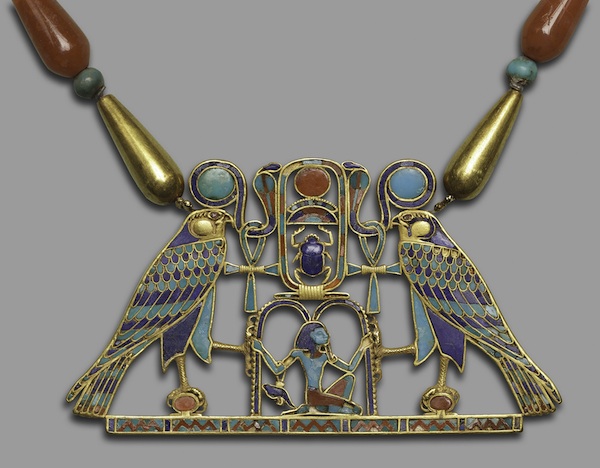
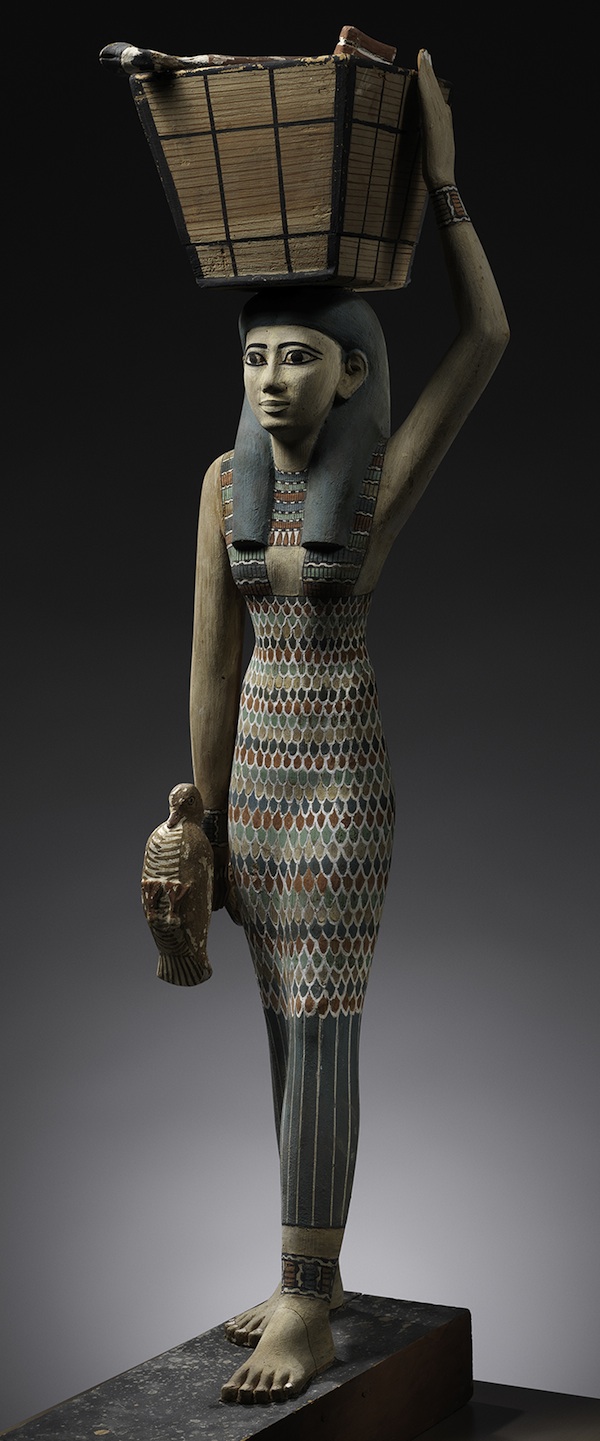
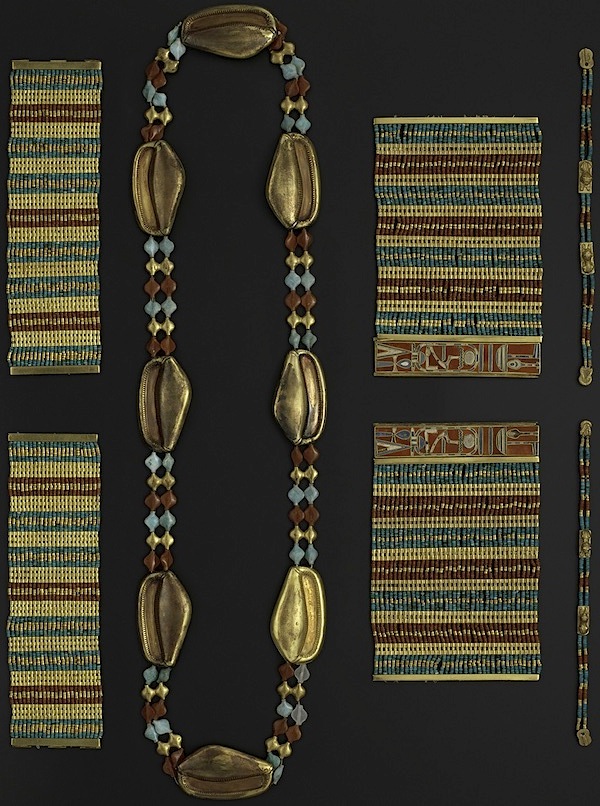
Another spectacular jewel on display is a pendant on loan from Scotland, a beautiful sculpted gold fish, probably also from the Twelfth Dynasty. Found in a tomb in El-Haraga, this would likely have been worn as a hair ornament.
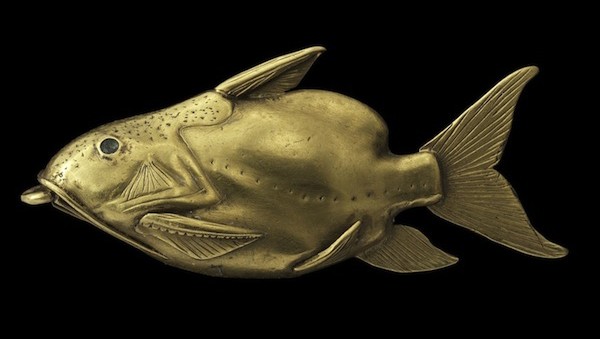
Fish pendants were a popular motif in Ancient Egypt, and not just among women who could afford gold. Amulets like the one below, designed around carved beryl (from the Met’s permanent collection) were probably more common – crude but constructed to serve a specific, very important function. 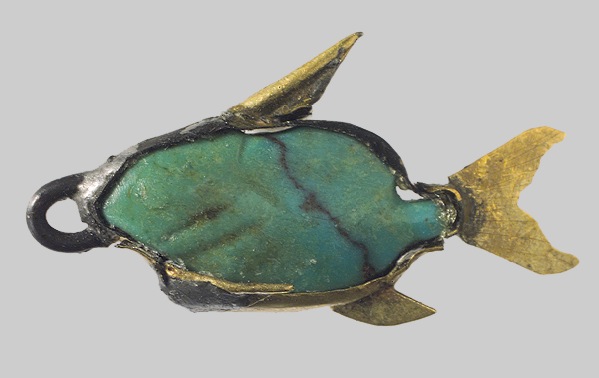 Fish amulets, like this nekhau, were given to young girls to wear as a charm against drowning. Some scholars suggest they functioned as “reminders of a watery environment,” to give the owner security, according to the catalog notes, “but it is much more likely that the amulet allowed the wearer to acquire the abilities of a fish, and therefore survival, if she happened to fall into the water.”
Fish amulets, like this nekhau, were given to young girls to wear as a charm against drowning. Some scholars suggest they functioned as “reminders of a watery environment,” to give the owner security, according to the catalog notes, “but it is much more likely that the amulet allowed the wearer to acquire the abilities of a fish, and therefore survival, if she happened to fall into the water.”
Artistic expression greatly expanded in Egypt during the Middle Kingdom. The exhibition shows how styles evolved and culture and religion transformed. Many of the motifs in protective amulets and magical objects we associate with Ancient Egypt were introduced during the Middle Kingdom. Some, like the fish, were believed to shield young girls, others were designed to protect children and pregnant women.
Egyptian men were just as likely to be bejeweled – at least royal ones, like this pharaoh.
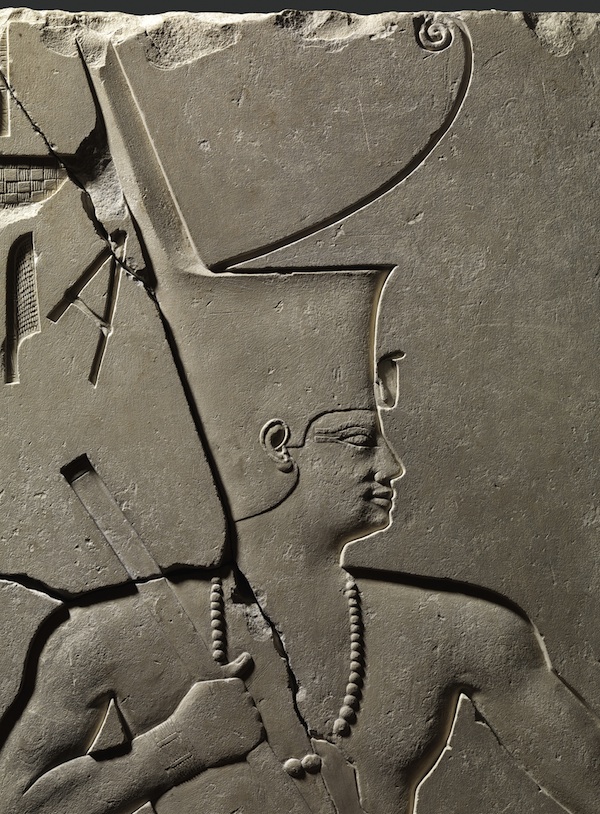
Second pharaoh of the Twelfth Dynasty of Egypt, Senwosret I ruled from 1971 to 1926 BC, another powerful king during this dynasty.
But most of the actual jewels on display belonged to women. Royal women were always closely connected to the pharaohs in Ancient Egypt. Less is known about Middle Kingdom queens and princesses, but much of the finest ancient Egyptian jewelry was produced for elite women.
Inscriptions and symbolic motifs endowed the jewelry with spiritual power and related to the role these women played in supporting the kings as guarantors of divine order on earth, as well as her role in the family, a major theme in Egyptian art.
Cleopatra, of course, was yet to come. There were actually several Cleopatras, but the one we know would adapt all these themes in her reign and in her persona.
Related products

